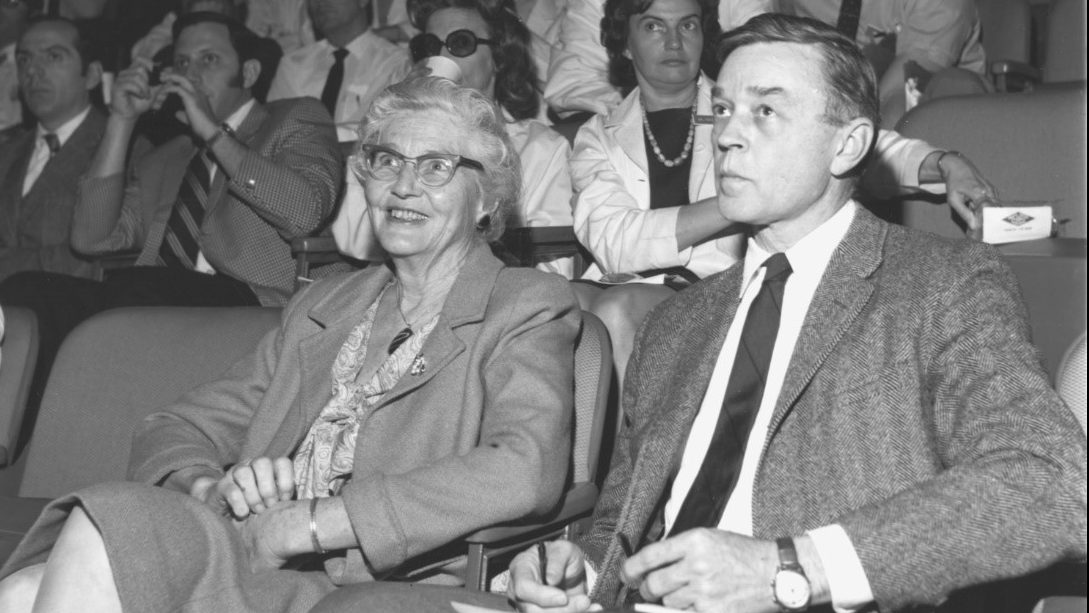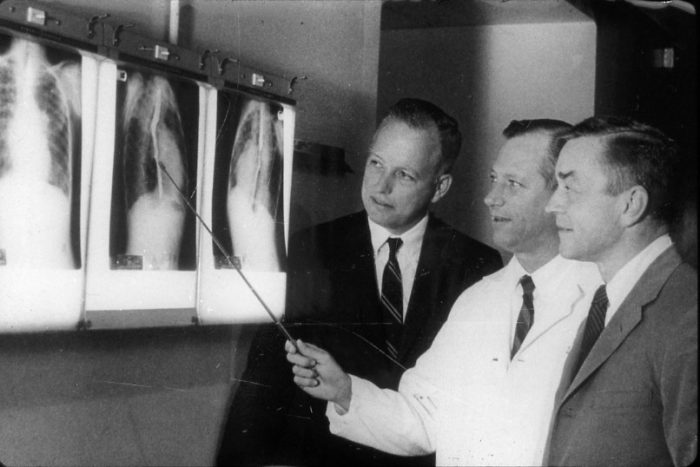Did You Know? Dan G. McNamara, MD Was Houston’s First Pediatric Cardiologist

Upon its formation, the Texas Heart Institute joined Texas Children’s Hospital, Baylor College of Medicine, and St. Luke’s Episcopal Hospital in a heart program led by the first pediatric cardiologist to practice in Houston: Dr. Dan Goodrich McNamara. A native of Waco, Texas, McNamara earned his medical degree at Baylor College of Medicine in 1946, when the school was based at what was formerly the Sears building. McNamara sometimes joked that he’d had a pretty respectable career for someone who got his medical degree from a department store.
Soon thereafter, McNamara spent 2 years at the US Naval Hospital in Quantico, Virginia. There were no open positions in pediatrics, so he was assigned to surgery instead. He later opined that this was fortuitous for his cardiology career, because the experience helped him identify patients who were good candidates for surgical treatment.
After completing 2 pediatrics residencies, McNamara spent 2 years as a fellow at Johns Hopkins under the tutelage of Dr. Helen Taussig, who is widely considered the founder of pediatric cardiology. She was the leading expert in the field of congenital heart disease, which became McNamara’s chief clinical interest.
McNamara was then recruited by Dr. Michael DeBakey to work with Dr. Denton Cooley in establishing a heart program based at the newly opened Texas Children’s Hospital. While planning the program, McNamara and Cooley visited Dr. John Kirklin’s pediatric heart program at the Mayo Clinic. McNamara admired that program’s multidisciplinary approach and used it in designing the Houston heart program. He later stated that “In the field of heart disease, a team approach is essential. A cardiovascular surgeon is not trained to perform diagnostic studies, or a cardiologist to do surgery.” The program also benefitted from the expertise of other specialists, most notably pediatric radiologist Dr. Edward Singleton and anesthesiologist Dr. Arthur Keats, who developed mechanical ventilators, endotracheal tubes, and other devices specially designed to support children undergoing cardiovascular surgery.

In 1954, the program’s first year, McNamara successfully performed the first cardiac catheterization ever attempted at Texas Children’s and St. Luke’s. Decades later, McNamara described cardiac catheterization as “one of the most important advances that I have seen in the 33 years that I have been at Texas Children’s Hospital.”
Nonetheless, surgery remained central to the program. From 1954 through the 1960s, McNamara’s team developed an innovative series of operations for infants with various congenital heart diseases, including tetralogy of Fallot and coronary arterial and venous defects. As a result of these and other innovations, the number of patients treated in the heart program grew from 485 in 1954 to more than 6,000 by 1983.
McNamara led the program for 31 years, and he continued treating patients until a few weeks before his death in 1998. The teaching award in pediatric cardiology at Texas Children’s was named for him, as were the Cardiac Clinic and the Learning Resource Center of the Texas Children’s Heart Center. His most important legacy, however, is the many children with congenital heart disease who survived to adulthood because of his abilities, both as a physician and as a mentor to the next generation of pediatric cardiologists.

.svg)


